The Celestial Empire in Russia | Reporter’s Notes
This year celebrates the 70th anniversary of establishing diplomatic ties between Russia and China, and these relations serve as a model of trust-based and strategic partnership. Further humanitarian cooperation is one of the key prerequisites to continue the development of relations between the two countries.
A delegation of reporters from Chinese international publishing group visited Russia with a mission to cover collaborations implemented as part of “One Belt, One Road” initiative. The present author, a China Reports agency’s reporter, flew over to Russia with the delegation to see the in-depth humanitarian cooperation between Russia and China with his own eyes. As it turned, the Celestial Empire can be seen in Russia literally everywhere.
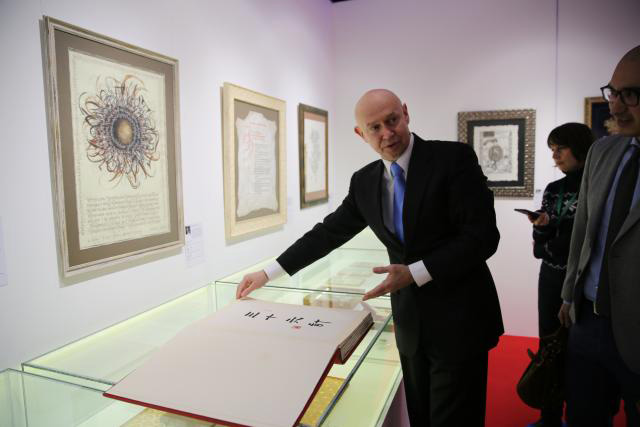 Director of the Contemporary Museum of Calligraphy Alexey Shaburov presented an artwork jointly made by Russian and Chinese authors – “36 Stratagems.” Founded on August 14, 2008, the Contemporary Museum of Calligraphy currently exhibits 3900 artworks made by 447 calligraphy artists from 90 countries.
Director of the Contemporary Museum of Calligraphy Alexey Shaburov presented an artwork jointly made by Russian and Chinese authors – “36 Stratagems.” Founded on August 14, 2008, the Contemporary Museum of Calligraphy currently exhibits 3900 artworks made by 447 calligraphy artists from 90 countries. 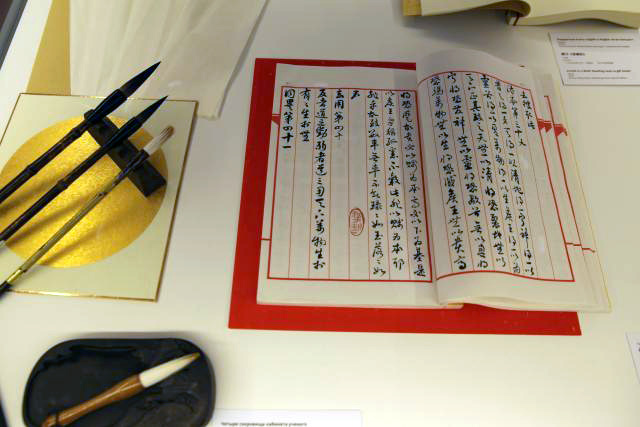 The Contemporary Museum of Calligraphy also features an exhibit of Chinese calligraphy.
The Contemporary Museum of Calligraphy also features an exhibit of Chinese calligraphy. 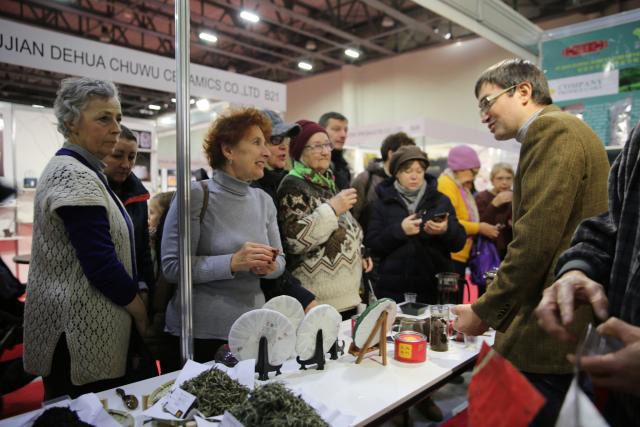 A joint exhibition of Chinese tea, “One Belt, One Road” opened in Sokolniki Exhibition and Convention Centre on November 22, 2019, showcasing more than 60 tea and tea ware producers from Fujian. Representatives of tea companies, suppliers, restaurants and tea fans from Russia and the CIS countries visited the event. According to the organizers, 80% of exhibitors have secured product orders during the exhibition.
A joint exhibition of Chinese tea, “One Belt, One Road” opened in Sokolniki Exhibition and Convention Centre on November 22, 2019, showcasing more than 60 tea and tea ware producers from Fujian. Representatives of tea companies, suppliers, restaurants and tea fans from Russia and the CIS countries visited the event. According to the organizers, 80% of exhibitors have secured product orders during the exhibition.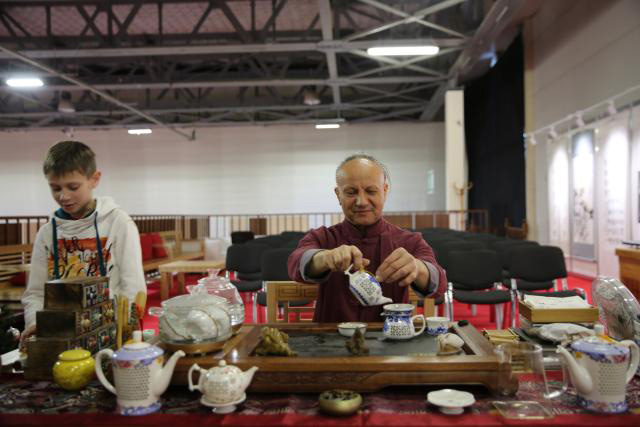 Tea culture is extremely popular in Russia. A tea exhibition in Sokolniki Exhibition and Convention Centre included workshops for Chinese media representatives held by Russian tea ceremony experts.
Tea culture is extremely popular in Russia. A tea exhibition in Sokolniki Exhibition and Convention Centre included workshops for Chinese media representatives held by Russian tea ceremony experts. 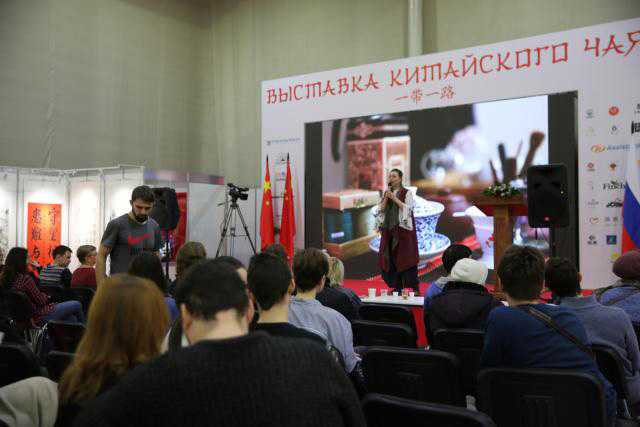 An exhibition of tea in Sokolniki offered vibrant talks about Chinese tea culture.
An exhibition of tea in Sokolniki offered vibrant talks about Chinese tea culture. 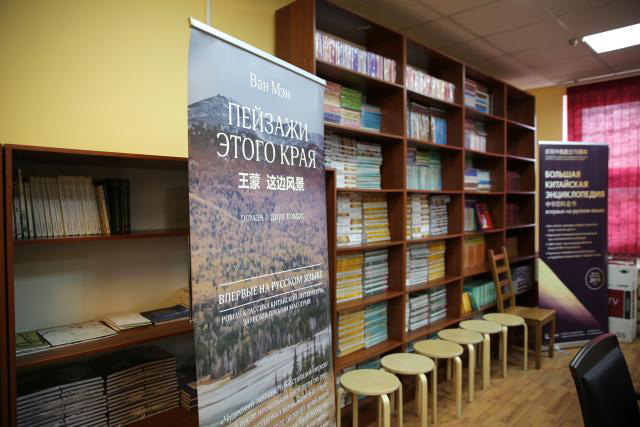 The international publishing company “Shans,” which is currently based in China, Russia, Kazakhstan and Kyrgyzstan, was established on April 13, 2010. Today it’s the largest Eastern European and Central Asian publishing company that focuses on the books about China. Recently it has presented a Russian translation of Wang Meng’s “Landscapes of These Parts” (China), which has captured all the Russian readers’ hearts.
The international publishing company “Shans,” which is currently based in China, Russia, Kazakhstan and Kyrgyzstan, was established on April 13, 2010. Today it’s the largest Eastern European and Central Asian publishing company that focuses on the books about China. Recently it has presented a Russian translation of Wang Meng’s “Landscapes of These Parts” (China), which has captured all the Russian readers’ hearts. 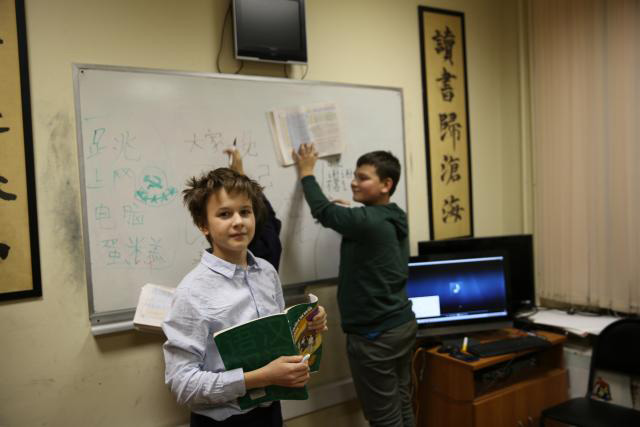 Children learn characters at Chinese training courses in Confucius Institute at the Russian State University for Humanities. Russia held the first Chinese unified state exam in 2019. The interest to Chinese language in Russia grows continuously.
Children learn characters at Chinese training courses in Confucius Institute at the Russian State University for Humanities. Russia held the first Chinese unified state exam in 2019. The interest to Chinese language in Russia grows continuously. 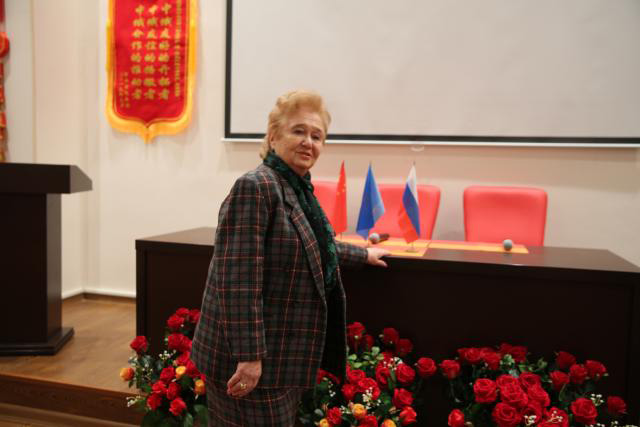 Galina Kulikova, holder of the PRC Friendship Order, shared that this room often hosted the activities of the Russian-Chinese Association for Friendship. Kulikova, 84, has been dealing with international relations her entire life, and even today she actively continues in her role of a “national diplomat.” She believes the citizen diplomacy is critical to establish trust-based relations between the peoples of Russia and China.
Galina Kulikova, holder of the PRC Friendship Order, shared that this room often hosted the activities of the Russian-Chinese Association for Friendship. Kulikova, 84, has been dealing with international relations her entire life, and even today she actively continues in her role of a “national diplomat.” She believes the citizen diplomacy is critical to establish trust-based relations between the peoples of Russia and China. 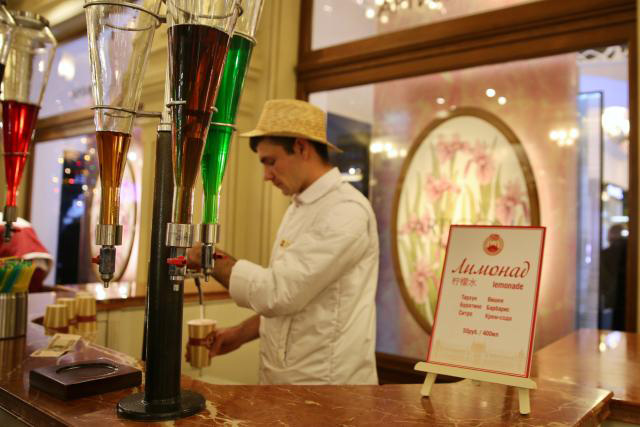 Signs in Russian, English, and Chinese can be seen everywhere in Moscow, Saint Petersburg, and other major locations. According to the Russian Federal Tourism Agency, approximately 2 million tourists from China visited Russia in 2018.
Signs in Russian, English, and Chinese can be seen everywhere in Moscow, Saint Petersburg, and other major locations. According to the Russian Federal Tourism Agency, approximately 2 million tourists from China visited Russia in 2018. Text and imagery courtesy of Xu Hao
Source: China Reports
For the largest part ill handwriting in the world is caused by hurry.
(Lewis Carroll)



